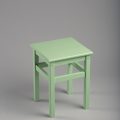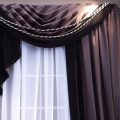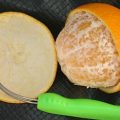Check windows, they are often completedcheap and fragile plastic handles. The window is not tightly closed, and if you overdo it, the handle can break off altogether. You can replace it yourself: turn the decorative plate at an angle of 90 degrees, unscrew the bolts and remove the handle. Buy the same, only quality and put in place. To get rid of drafts, you need to carefully seal the gap in the windows - silicone sealant or just glue the paper. Photo:Getty ImagesAttach aluminum foil behind the radiator to reflect heat energy and raise the room temperature by a few degrees. The cheapest food foil will do for this purpose.Free up the radiators. Do not place large furniture in front of them – the sofa and wardrobe will absorb the heat. It is also important not to place things to dry on the radiator, especially if it is behind curtains, where warm air will circulate between the window and the curtain.Use thick curtains on windows and in front of entrance doors – this will protect against draughts and add another layer of thermal protection. Open curtains, drapes and blinds during the day. Use natural and free heat in the form of sunlight as much as possible.Apply thermal film to the windows. Replacing old plastic or wooden windows with new ones with double or triple glazing is an expensive pleasure. If the budget does not allow it, buy thermal film, which imitates the effect of double glazing, although to a lesser extent. And everyone can stick it on. Insulate the front door. A lot of heat can escape through keyholes and cracks in jambs. If the doors in the house have been installed for a long time, then the plastic ones need to be adjusted, and the wooden ones need to be covered with leatherette, and also nail rollers made of leatherette with felt around the perimeter. Lay down carpets. If the floors on the first floor are not insulated, 10% of the heat escapes through them. Thermal insulation will be expensive, and carpets will reduce heat loss. Long pile perfectly retains heat due to the air gap formed. If there are cracks and crevices in the floor, then they should be sealed with polyurethane foam, and an isolon or penofol underlay should be laid under the laminate. Use hot water bottles to warm your bed in the cold season. Open the oven door after cooking to heat up the kitchen. Home clothes - a terry robe, a wool sweater, fleece pants and warm socks - will help you stay warm and healthy in the cold season. Make a "heat trap" - place an inverted clay pot over a candle. It will catch the warm air coming from the candle and can warm up a small room.
Photo:Getty ImagesAttach aluminum foil behind the radiator to reflect heat energy and raise the room temperature by a few degrees. The cheapest food foil will do for this purpose.Free up the radiators. Do not place large furniture in front of them – the sofa and wardrobe will absorb the heat. It is also important not to place things to dry on the radiator, especially if it is behind curtains, where warm air will circulate between the window and the curtain.Use thick curtains on windows and in front of entrance doors – this will protect against draughts and add another layer of thermal protection. Open curtains, drapes and blinds during the day. Use natural and free heat in the form of sunlight as much as possible.Apply thermal film to the windows. Replacing old plastic or wooden windows with new ones with double or triple glazing is an expensive pleasure. If the budget does not allow it, buy thermal film, which imitates the effect of double glazing, although to a lesser extent. And everyone can stick it on. Insulate the front door. A lot of heat can escape through keyholes and cracks in jambs. If the doors in the house have been installed for a long time, then the plastic ones need to be adjusted, and the wooden ones need to be covered with leatherette, and also nail rollers made of leatherette with felt around the perimeter. Lay down carpets. If the floors on the first floor are not insulated, 10% of the heat escapes through them. Thermal insulation will be expensive, and carpets will reduce heat loss. Long pile perfectly retains heat due to the air gap formed. If there are cracks and crevices in the floor, then they should be sealed with polyurethane foam, and an isolon or penofol underlay should be laid under the laminate. Use hot water bottles to warm your bed in the cold season. Open the oven door after cooking to heat up the kitchen. Home clothes - a terry robe, a wool sweater, fleece pants and warm socks - will help you stay warm and healthy in the cold season. Make a "heat trap" - place an inverted clay pot over a candle. It will catch the warm air coming from the candle and can warm up a small room.

Making Money with Desserts: Success Stories
Evgeniya Polischuk (Fedutinova) instagram:@evgeniyafedutinovavk.com/janeshomebaking– It all started with baking for family and friends. Gradually, I started posting photos of my baked goods on Instagram – and orders started coming in. I made my first custom-made cake on October 13, 2014, and a little earlier I started making macaroons and cupcakes. You could say that the business “found me”, I am very […]

Soups are cold recipes with photos
Cold cucumber soup with yogurt and lemonsorbet from the chef of the restaurant La Taverna Alexander Zhurkin Photo: Getty Images Ingredients: Plain yoghurt – 125 g Cucumber – 150 g Lemon/lime sorbet – 50 g Cocktail shrimp – 24 g Fresh ginger juice – 1 g Lime juice – 5 g Fresh orange juice – 5 g Parsley – 1 g Pink pepper – 1 g Watercress – […]

barbeque kebab
Pork tenderloin in glaze Photo:Dmitry Bayrak/dbstudioPreparation time: 20 minutes + marinating time.Calories: 454 kcal per serving.For 4 servings: 4 pork tenderloins (approximately 300 g each), 1 onion, 2 cloves of garlic, 1 tsp. lemon zest, 1 tsp. lemon juice, a pinch of ground cumin, coriander and turmeric, 1 tbsp. vegetable […]

Pierre Duacan: dietary recipes: Ducane diet
Beetroot soup Photo:Season’S, Luxury Hotels RepresentationYou will need:· Boiled beetroot – 60 g· Fresh cucumbers – 20 g· Red radish – 20 g· Green onions – 10 g· Egg – 1 pc.· Drinking mineral water – 200 g· Salt – 1 gPreparation:· Boil the egg and beetroot.· Grate the cucumbers, radish and part of the beetroot. Put everything […]




